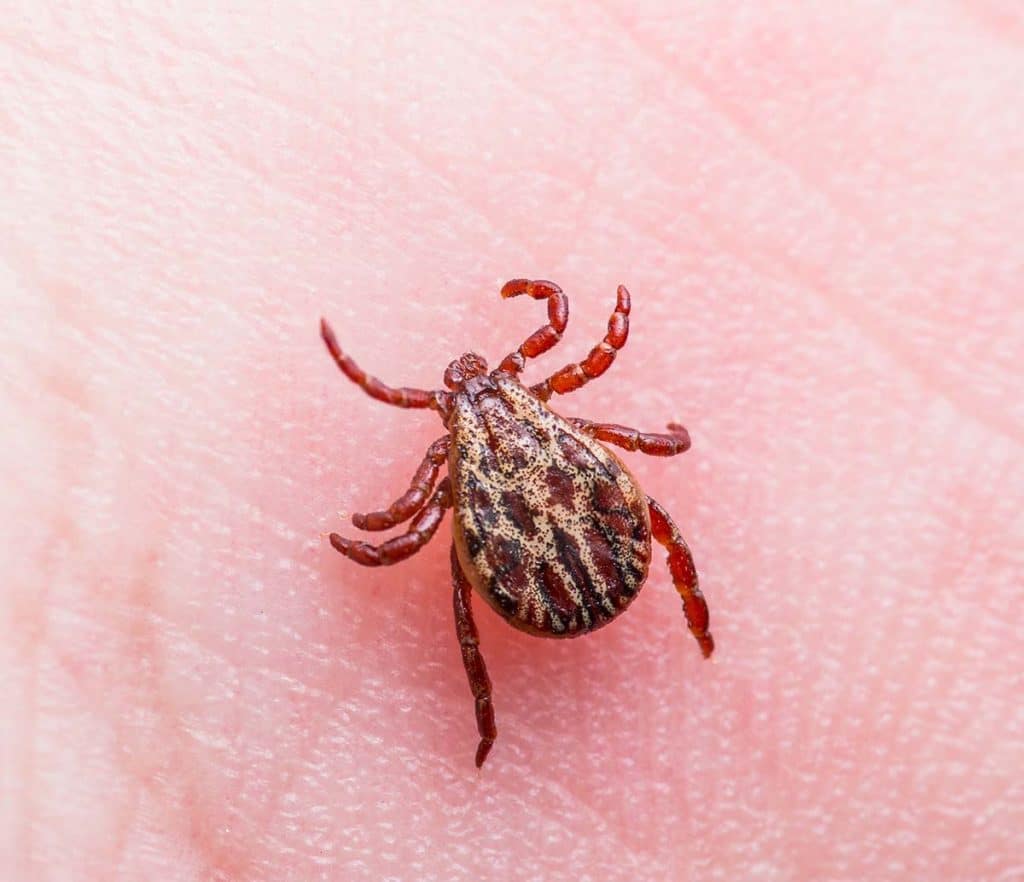While most tick bites do not result in serious illness, some species of ticks can transmit harmful pathogens that can cause diseases like Lyme disease.
When we hear about ticks, most people get the heebie-jeebies. No one wants to find one of these bloodsuckers crawling around on their body or pet. And rightfully so because next to mosquitoes, ticks are second at harboring and transmitting various pathogens, including Lyme disease.
If you have a tick problem this spring and summer, contact Titan Pest & Wildlife. Our specialists will inspect your property to identify the source of the infestation, take steps to eradicate the problem, and then provide ongoing tick control to avoid future infestations.

Facts About Ticks and Lyme Disease
Understanding some of the basic facts about ticks and Lyme disease can help you prevent tick bits and know how to recognize symptoms.
First, ticks are not insects. They are arthropods that are more closely related to spiders and mites. There are more than 800 species found throughout the world, and can attach themselves to humans, pets, and other animals. While most tick bites do not result in serious illness, some species of ticks can transmit harmful pathogens that can cause diseases like Lyme disease. Here are some additional facts.
- Ticks are common in wooded and grassy areas – Ticks are most commonly found in areas with tall grass, dense vegetation, and woods. They are typically found in regions with warm and humid climates, but they can also survive in cooler climates. Ticks usually hide in the brush, waiting for their host to pass by.
- Not all ticks carry Lyme disease – Lyme disease is transmitted by the blacklegged tick (Ixodes scapularis) in the northeastern and upper midwestern United States and the western blacklegged tick (Ixodes pacificus) along the Pacific coast. Not all ticks carry the Lyme disease-causing bacteria, Borrelia burgdorferi, so not every tick bite will result in Lyme disease.
- Lyme disease symptoms can vary – Symptoms of Lyme disease can vary widely, and not all patients experience the same symptoms. Common symptoms include a bullseye-shaped rash, fever, fatigue, headache, and muscle and joint pain. Lyme disease can lead to more severe symptoms, such as heart problems and nerve damage, if left untreated.
- Prompt treatment is essential – Prompt treatment with antibiotics is necessary for patients diagnosed with Lyme disease. Early treatment can prevent the disease from progressing to its later stages, which are more difficult to treat. Patients who are treated early in the course of their disease typically recover quickly and thoroughly.
- Prevention is key – Prevention is the best way to avoid Lyme disease. To reduce your risk of getting bitten by ticks, wear long-sleeved shirts and pants, use insect repellent, and perform tick checks after spending time outdoors. It’s also essential to keep your yard and garden well-manicured and to check your pets for ticks regularly.
Ticks and Lyme disease are significant health concerns that require vigilance and awareness. By understanding the facts about ticks and Lyme disease, you can take steps to prevent tick bites and seek treatment promptly if necessary.
Contact Titan Pest & Wildlife
If you discover a tick problem in your yard, contact Titan Pest & Wildlife. Our pest control experts will inspect your home and property to determine if your home has a tick infestation and any contributing factors attracting them. We will implement a plan to manage your precise needs and eliminate tick infestation while preventing future issues.

1 thought on “Ticks and Lyme Disease – What You Should Know”